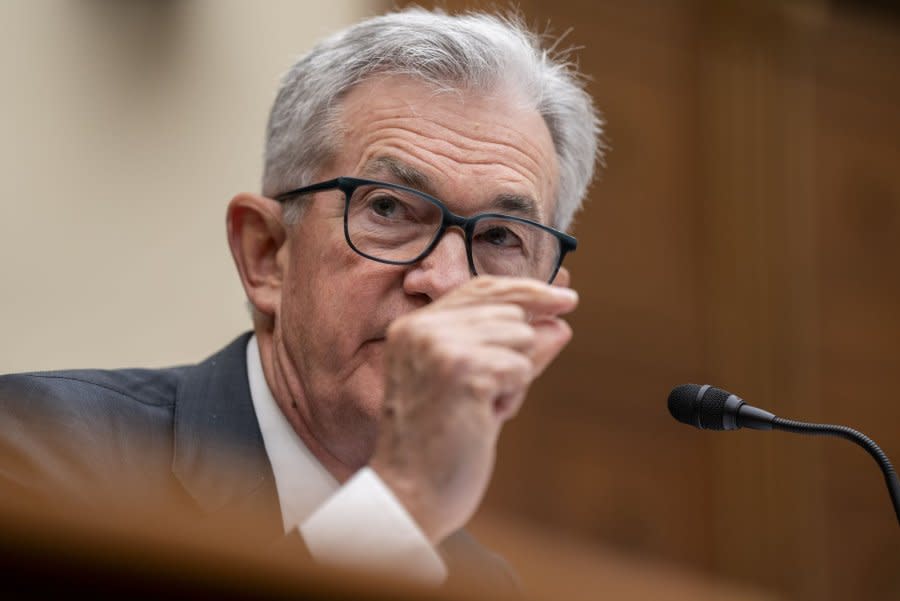Citing economy's 'strong growth,' Federal Reserve Board keeps interest rates unchanged

Jan. 31 (UPI) -- The Federal Reserve Board said Wednesday it will maintain current interest rates while it continues to watch for evidence of sustainably declining inflation in 2024.
The Federal Reserve rate will remain between 5.25% and 5.5% until the Federal Reserve Board is confident the nation's inflation rate reaches a goal of 2%, Fed Chairman Jerome Powell told reporters during a news conference Wednesday afternoon.
"Economic activity has been expanding at a growing pace," Powell said. "We've had very strong growth going into the fourth quarter."
Despite the economic trend, Powell said six months of good economic activity doesn't mean the inflation rate will continue falling. The Federal Reserve needs to see evidence that the inflation rate will continue a "sustainable path to 2%," he said.
When the board sees evidence of a sustainably declining inflation rate, Powell said it will have the confidence needed to lower the federal reserve rate. First, it must assess additional data, economic activity and risks to obtain that confidence.
"The likely case is that we will see the confidence" to lower the Federal Reserve interest rate, Powell said.
The interest rate decision comes amid improving inflation in the United States, reflected in a 0.2% rise in the personal consumption expenditures price index since December, and a 2.9% increase over the past year -- the Fed's preferred gauge of inflation.
Many economists had expected the Fed to wait even longer to cut rates, possibly until May, as the central bank was wary about inflation regaining steam if it moved too hastily to lower interest.
As a result, the Fed was likely to avoid making any decisive move on interest during Wednesday's announcement.
"The Fed is being very cautious as it navigates the potential for future rate cuts," LendingTree economist Jacob Channel told CBS. "While it doesn't want to leave rates high forever, it also doesn't want to cut them prematurely and risk inflation spiking again."
The Fed issued 11 consecutive benchmark rate increases with the goal of bringing inflation down to 2%.
But in the latter half of 2023, the nation's central bank began keeping interest rates unchanged to sustain the economy's upward trajectory.
At the last policy meeting, the Fed indicated that it might start slashing interest rates again after the new year as inflation had dipped to about 3.7% toward the end of 2023.
However, Powell said it was too soon to say when the reductions might occur, warning that any speculation about the timing of interest rate cuts was premature.
"It would be premature to conclude with confidence that we have achieved a sufficiently restrictive stance, or to speculate on when policy might ease," Powell said on Dec. 1.
"We have made considerable progress in reducing high inflation while maintaining a strong labor market," he continued. "The Federal Open Market Committee is strongly committed to bringing inflation down to 2% over time, and to keeping policy restrictive until we are confident that inflation is on a path to that objective."
Meanwhile, 10-year Treasury yields declined Wednesday to 4.0241%, while the 2-year Treasury yield was more than three points lower at 4.3221%, according to CNBC.
This follows a post-pandemic boom on the bond note that electrified Wall Street in 2023.
Previously, the bond market bottomed out at 0.5% in 2020 as investors fled to risk-free Treasuries during the global pandemic, but bounced back in 2023 as industry recovered following the official end of the national health emergency last May.

